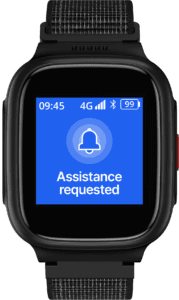Vehicle crashes and road crash fatalities have been on the increase for years. As the owner of a fleet, it’s important to be aware of trends and to draw attention to the importance of safety amongst your drivers. Let’s take a look at some of the eye-opening statistics on the issue of vehicle crashes:
“A 5km/hr reduction in speed can lead to at least 15% decrease in vehicle crashes.”
The takeaway from this message is that merely slowing down would cause a dramatic reduction in vehicle crashes. In vehicular crashes, the risk of fatality increases the faster the impact occurs. A car crash at 80 km/hr equals a risk of death over 20 times higher than a collision at 30 km/hr.
The reason for this is simple physics: when a collision happens, the kinetic energy from the moving vehicle has to be transferred to something. Some of the kinetic energy will be absorbed by the car. The rest will be transferred to whatever the car is.
whether it’s a tree, a wall, a lamppost, or a person.
Lowering the speed limit, therefore, leads to a decrease in fatalities. When speed limits in the United States were lowered during the oil crisis in the 1970s from 70mph to 55mph, the number of fatalities from crashes decreased by 16.4%.
Seatbelts decrease the risk of fatal injury by 45% for drivers and front-seat passengers.
While wearing a seatbelt is largely a legal requirement wherever you go, there will always be people who don’t wear them. However, the facts are plain: wearing a seatbelt greatly decreases your chances of being killed in a crash.
Airbags, while a fixture in most modern vehicles, do not make for a replacement for a seatbelt. Airbags are designed to cushion the impact of people who are already wearing a seatbelt and who are sitting properly in their seats.
It’s ideal that your fleet tracking software is able to monitor the use of seatbelts by your drivers. The Geotab suite (see here) is one of those that are able to demonstrate to you your drivers’ seatbelt use.
Recommended: More about Geotab Telematics
Vehicle crashes were responsible for 37,461 deaths in 2016.
There was a noted increase of 13% between 2013 and 2016 in deaths caused by vehicles in the United States. Prior to this, there had been a steady decline for the past 40 years, according to the Insurance Institute for Highway Safety (IIHS). In 1975, we saw 44,525 deaths from crashes. In the few years since 2016, we can see the figure beginning to rise again.
So what’s the cause of this? A number of reasons have been speculated, including speeding, texting, drinking, and marijuana use. This goes to show that no matter the number of improvements in technology, driver behaviour is the most important thing when it comes to preventing road traffic accidents.
Driver fatigue was a factor in 13% of large vehicle crashes.
Driver fatigue is one of the greatest concerns in trucking. In the United States, the ELD mandate was introduced in order to ensure that truck drivers were not left driving while fatigued. Truckers driving for more than 8 hours are twice as likely to crash.
While regulation is extremely important, it’s also important that businesses use the technology available to them to ensure that their drivers are not driving tired or under the influence. While the UK doesn’t have the same distances to cover as the United States, it’s still important to ensure that drivers aren’t left driving for inordinate periods of time.
The use of telematics software can help to ensure that drivers are sufficiently rested when driving long distances. Tracking devices show how long a driver has been driving and allow you to instruct them to take a break.
Ultimately, then, we see that a great number of crashes are attributable to driver behaviour and driver speeds. As such, we see how important it is for companies to use tracker software for their fleets in order to ensure that they are obeying the rules of the road. For more information about tracking software, contact SafeTrac Solutions today. We’re always happy to hear from you!






